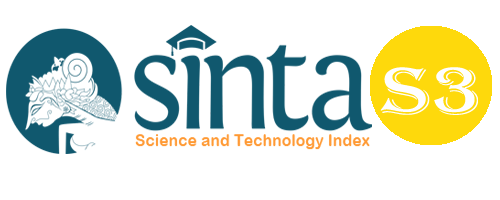Analytic Review on Theory of Living Hadith
Abstract
Keywords
Full Text:
PDFReferences
Abd ar-Raḥmān ibn Abī Bakr jalāl ad-Dīn as-Suyūṭī. (2003). Tadrīb ar-Rāwī fī Syarḥ Taqrīb an-Nawawī (Mamlakatu al-ʻArabiyah as-Suʻūdiyyah: Dār al-ʻĀṣimah), juz II, h. 185
Abd al-Wahhāb Ibrāhīm Abū Sulaimān. (1986). Kitābatu al-Baḥṡ al-‘Ilmī wa Maṣādir ad-Dirāsāt al-Islāmiyyah (Jeddah: Dār asy-Syurūq), h. 21.
Abī al-Ḥusain Aḥmad ibn Fāris ibn Zakariyyah ar-Rāzī. (1993). aṣ-Ṣāḥibī fī Fiqh al-Lughah al-‘Arabiyyah wa Masā;iliha (Beirūt: Maktabah al-Ma‘ārif), h. 44.
Al-’Asyrafī, asy-Syarḥ al-Mauḍūʻī, h. 107
Al-’Asyrafī, asy-Syarḥ al-Mauḍūʻī, h. 111.
Bukhārī, al-Jāmiʻu. (1907). bāb Kaifa Kāna Bad’u al-Waḥy ila Rasulillāh, no. 1, h. 1. An-Naisabūrī, Ṣaḥīḥ, h. 1056.
Departemen Agama RI., Al-Qur’an dan Terjemahnya (Riyadh: Darussalam, 2006), h. 444.
Fatḥ ad-Dīn Bayānūnī, Ahammiyyat asy-Syurūḥ wa Qawa‘iduhu, Kitāb Mu’tamar Manāhij Tafsīr al-Qur’ān al-Karīm wa Syarḥ al-Ḥadīṡ asy-Syarīf (Buku, tidak diterbitkan), h. 951.
Ghāzī Ḥusain ‘Ināyah. (1983). Manāhij al-Baḥṡ (al-Iskandariyyah: Mu’assasah asy-Syabāb al-Jāmi‘ah), h. 75.
Haifā’ ʻAbd al-ʻAzīz al-‘Asyrafī, asy-Syarḥ al-Mauḍūʻī li al-Ḥadīṡ asy-Syarīf. (2012). (al-Qāhirah: Dār as-Salām), h. 57
Ibnu Manẓūr, Lisān al-‘Arab (al-Qāhirah: Dār al-Ḥadīṡ, 2003), Juz I, h. 100.
Nuraini. (2020). The Potentials of Goodness and Badness in Humans on the Qur'an and Hadith. Budapest International Research and Critics Institute-Journal (BIRCI-Journal). P. 718-728
Majma‘ al-Lughah al-‘Arabiyyah, al-Mu‘jam al-Wajīz. (1994)(Miṣr: Wizāratu at-Tarbiyyah wa at-Talīm), h. 9.
Muḥammad ibn ʻAbd ar-Raḥmān as-Sakhāwī asy-Syāfiʻī, Fatḥ al-Mughīṡ bi Syarḥ Alfiyati al-Ḥadīṡ. (2009). (ar-Riyāḍ: Maktabah Dār al-Minhāj, 2005), Juz III, h. 422. Aḥmad ibn ‘Alī Abū Bakr al-Khaṭīb al-Baghdādī, al-Kifāyah fī ‘Ilmi ar-Riwāyah (Beirūt: Mu’asasah ar-Risālah), h. 282.
DOI: https://doi.org/10.33258/birci.v3i2.1017
Article Metrics
Abstract view : 187 timesPDF - 223 times
Refbacks
- There are currently no refbacks.

This work is licensed under a Creative Commons Attribution-ShareAlike 4.0 International License.

This work is licensed under a Creative Commons Attribution-ShareAlike 4.0 International License.

_.gif)

















_.gif)



